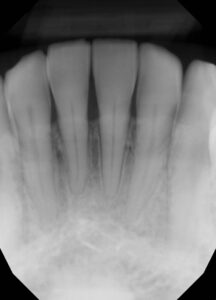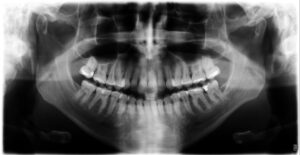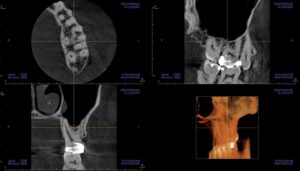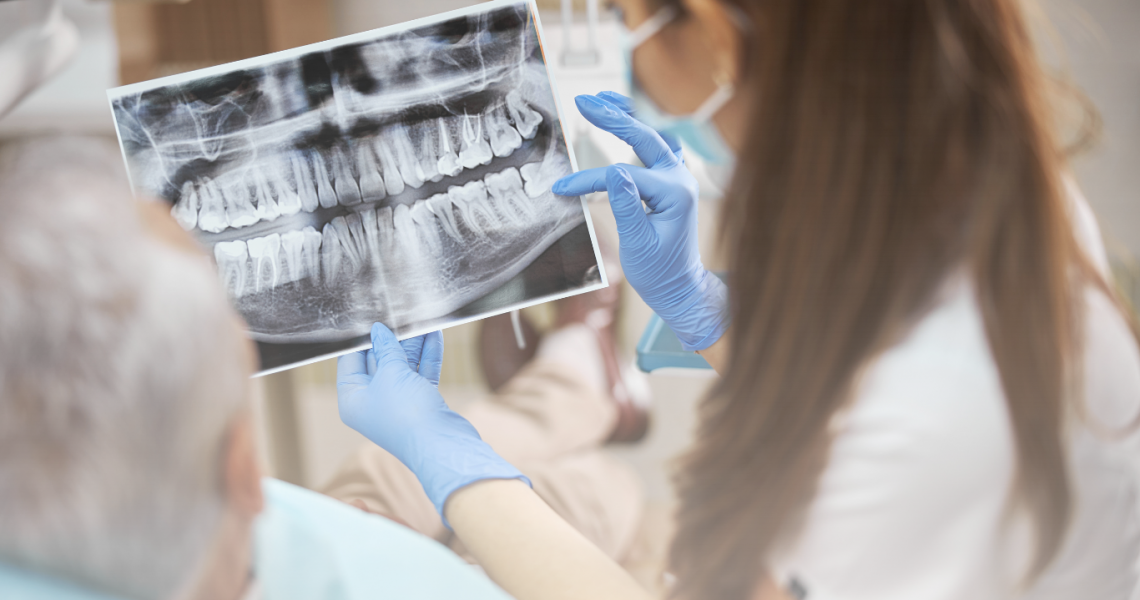Dental radiographs, commonly known as X-rays, are a form of high energy electromagnetic radiation and are an important tool to help your doctor properly diagnose your oral health needs. They are a safe way to diagnose disease and injury of the teeth and gums, as well as help in planning treatment to help restore any issues found. Similar to how X-rays help doctors detect broken bones, dental X-rays reveal problems that are not visible through the gum tissue and enamel, such as issues with the teeth and jawbone. X-rays can help us identify potential problems before they become severe, painful or expensive.
What is radiation?
Radiation is energy released from unstable atoms in the form of waves or particles. Radiation is all around us and comes from the earth and outer space and is classified as natural and man-made. Did you know that cell phones, fluorescent lamps, microwaves and computers all emit more radiation than dental X-rays? 82% of radiation on earth is Natural (or background) radiation from the sun, soil, rocks, buildings, air and even water. Exposure to radiation from a dental X-ray is less than what you are exposed to on a flight from New York to Los Angeles and even from watching a year of television!
X-rays allow doctors to:
Detect cavities
Examine tooth roots for signs of resorption or infection
Assess the health of the bone surrounding the teeth
Identify periodontal disease(bone loss/recession/inflammation)
Monitor overall tooth health through prevention and coaching if there are small spots that start to develop (it is always easier, cheaper and less time investment to head off issues than fix larger issues)
Types of Dental X-rays
Bitewings

Shows the upper teeth and lower teeth biting together to show the biting surfaces of the teeth.
Used to diagnose any cavities on the flossing in-between areas of teeth and helps determine bone level for diagnosing periodontal disease or evidence of inflammation
Periapical

Show 1 or 2 complete teeth from the biting surface of the teeth to the root
Used to diagnose root infections or evidence of cracks
Panoramic

Shows all the jaw and teeth in one shot.
Used to plan treatment for dental implants, check for impacted wisdom teeth, and to detect any jaw problems.
Cone Beam (CBCT or 3D X-ray)

Shows a 3D view of your mouth and roots to help diagnose what a 2D image may not be able to see. This can include cracked roots, infections and also a 3D view for safe implant placement
At Brooks Family Dental, we generally recommend Bitewing X-rays (check-up X-rays) annually and a Panoramic film every 5 years to evaluate your current oral health and establish a baseline for future assessments. However, these are general guidelines, and the frequency may vary based on individual needs. We adjust the timing of X-rays according to your unique situation, focusing on your overall health. X-rays play a crucial role in the early detection and treatment of dental issues, helping to prevent pain, save time and money, and ensure a healthy mouth.
If you have any questions, please do not hesitate to give our office a call.
While in the office, feel free to ask! We love talking all things dental and will happily explain reasons behind anything we do.
Sources:
Spear Education
State of Nevada : https://dpbh.nv.gov/uploadedFiles/dpbhnvgov/content/Reg/Radiation-Machines/Docs/Discoveryofradiationandradiationsafety.pdf Page 11


